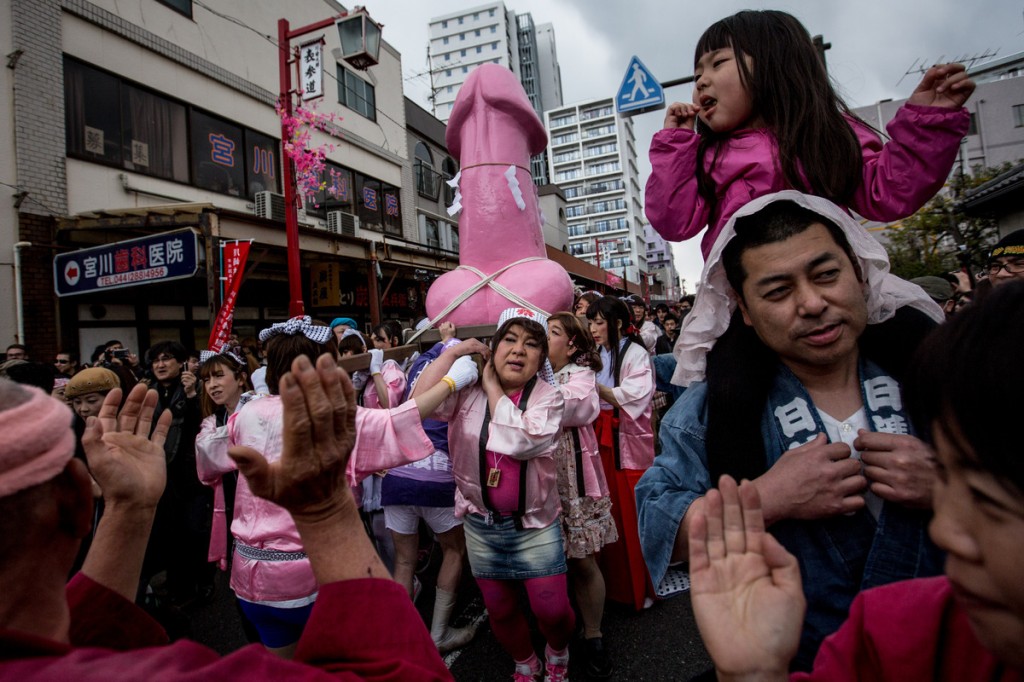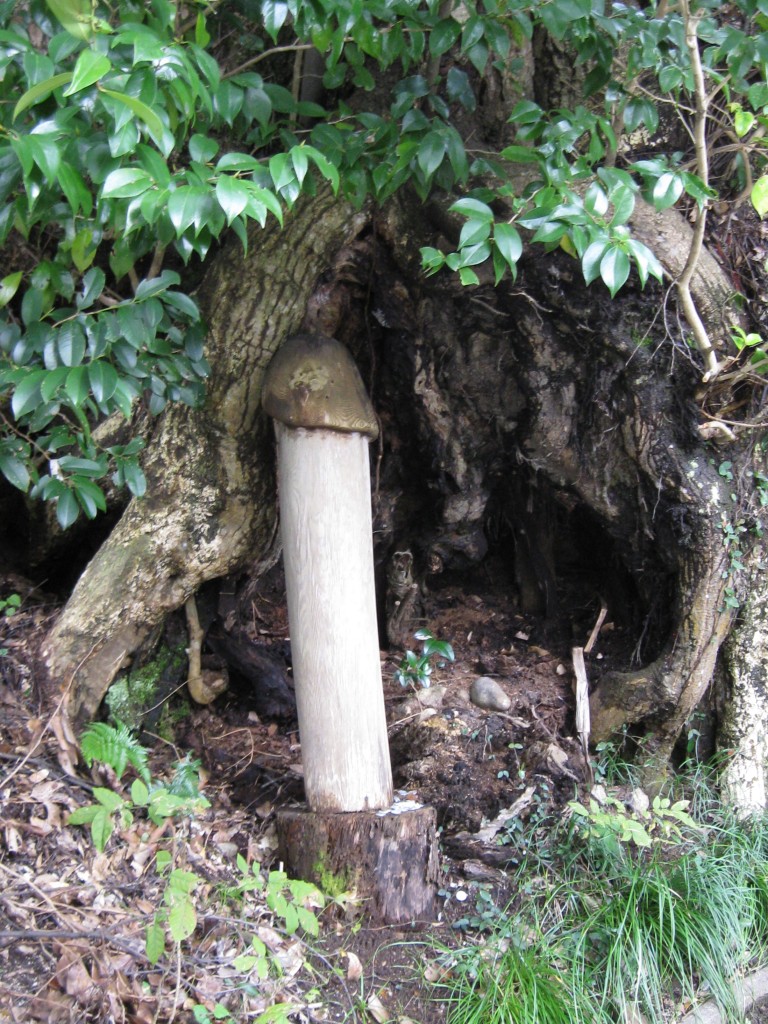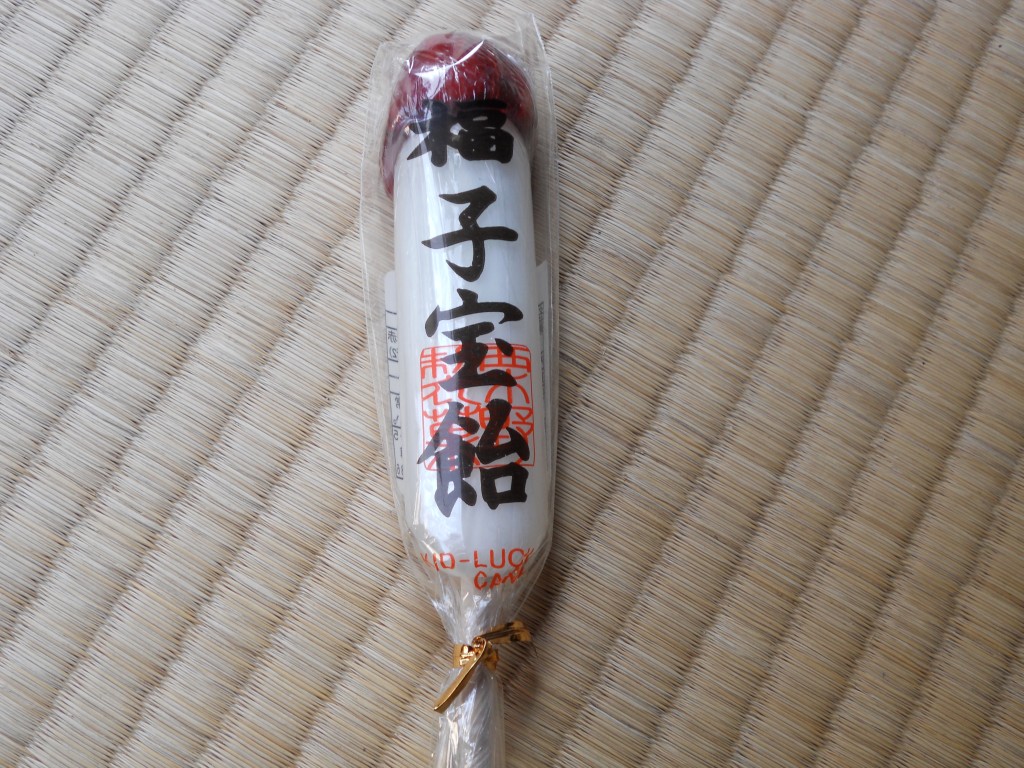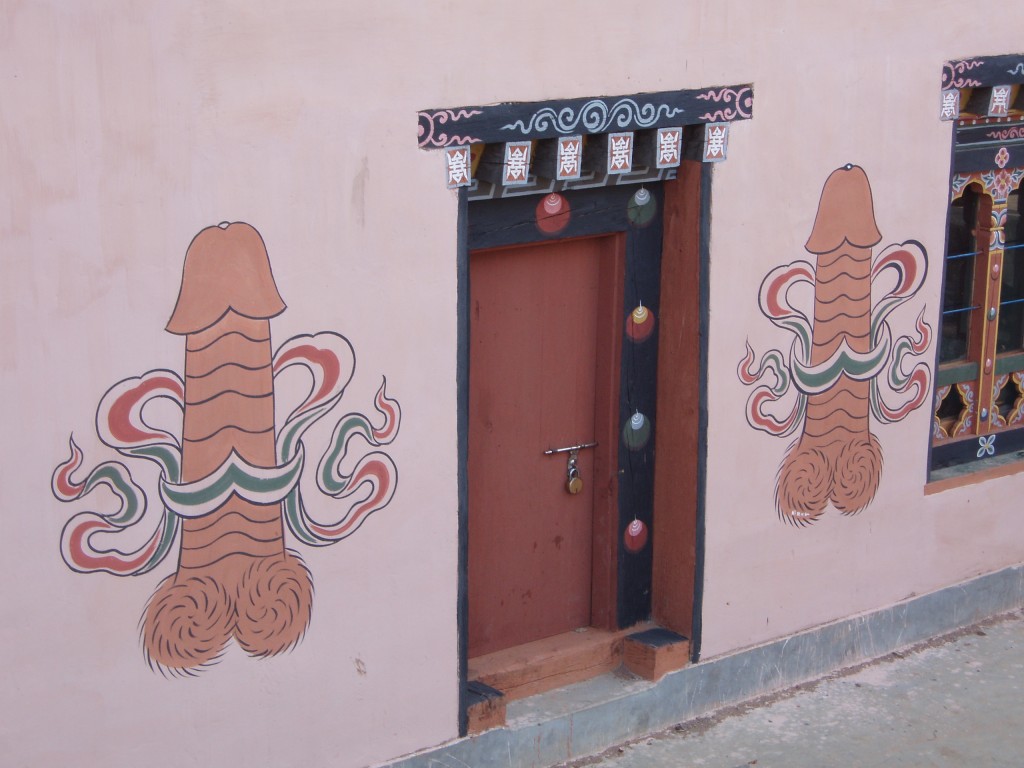
Photo courtesy Chris McGrath/Getty Images
The first Sunday in April sees the Kanamara Festival in Kawasaki take place. This year by a curious coincidence it falls on the same weekend as Easter. In fact, it’s not really a coincidence at all, as Christianity took springtime with its celebrations of rebirth and renewal as an opportunity to celebrate the resurrection of Jesus. The Easter bunny and the Easter egg are remnants from pagan fertility rites, and in Japan one of the most graphic fertility festivals is the Kanamara Matsuri. As the Huffington Post put it last year….
‘Each spring, people flock to Kawasaki, Japan, to celebrate Kanamara Matsuri, aka the “Festival of the Steel Phallus.” – a celebration of the penis and fertility. People parade gigantic phallic-shaped mikoshi (portable Shinto shrines) down the streets during the event, as revelers suck on penis lollipops, buy penis-themed memorabilia and pose with sculptures in the shape of — you guessed it — penises.
According to the BBC, the festival is believed to have roots in the 17th century, when prostitutes are said to have prayed for protection from sexually transmitted infections at Kawasaki’s Kanamara shrine. Today, the festival reportedly raises awareness about safe sex practices and fundraises for HIV prevention.
Shinto and sex have been intertwined since mythological times. The national creation myth involves Izanagi no Mikoto and Izanami no Mikoto stirring the primordial muck with a “heavenly jeweled spear” from which congealed bits drip off – generally thought to be an allegorical penis dripping sperm. Later in the Kojiki, Amenouzume no Mikoto flashes her sexual organs at the festival held in front of the Rock Cave in which Amaterasu is hiding. Curious to see what is going on, the Sun Goddess peers out and, distracted by her reflection in a mirror, is lured out, thereby restoring light to the world. Sex and sexuality are thus firmly aligned with positivity, with creativity, and with the lifeforce. Small wonder then that springtime sees so many Shinto festivals…
***********************************

Phallic representations were once common across Japan, as this one at Yaegaki Shrine
Wikipedia
Kanamara Matsuri (“Festival of the Steel Phallus”) is held each spring at the Kanayama Shrine in Kawasaki, Japan. The exact dates vary: the main festivities fall on the first Sunday in April. The penis, as the central theme of the event, is reflected in illustrations, candy, carved vegetables, decorations, and a mikoshi parade.
The Kanamara Matsuri is centred on a local penis-venerating shrine. The legend being that a sharp-toothed demon (vagina dentata) hid inside the vagina of a young woman and castrated two young men on their wedding nights. As a result, the young woman sought help from a blacksmith, who fashioned an iron phallus to break the demon’s teeth, which led to the enshrinement of the item. This legend in Ainu language was published as “The Island of Women” by Basil Hall Chamberlain.
The Kanayama Shrine was popular among prostitutes who wished to pray for protection from sexually transmitted infections. It is also said the shrine offers divine protections for business prosperity, and for the clan’s prosperity; and for easy delivery, marriage, and married-couple harmony. Today, the festival has become something of a tourist attraction and is used to raise money for HIV research.
*****************************************
Information below is taken from a private blog:
The Origin of the Giant Pink Penis Festival
During the Edo period (early 1600s) Kawasaki became an important town, being so close to the capital (only a river separates Tokyo to Kawasaki.) Kawasaki It was also one of the last stops for travelers on the Tōkaidō between Edo and other western destinations. Like all good tourist area, Kawasaki had its share of recreation for weary travellers. One such “recreation” was the famous tea houses. In these tea houses, they didn’t only sell tea but also the use of young women for a limited time.
Kanamara shrine was visited by such prostitutes to pray for the protection of the gods against venereal diseases.

A phallic candy
The legend goes that a women’s vagina was inhabited with a toothed demon who would bite off the penis of men. After having castrated her newly-wed husband on two different occasion, she went to see a metalsmith who made her a penis made of metal to break the teeth of the demon, thus allowing her to have a normal life. (would the toothed demon be an allegory for a STD?)
With time, the local prostitutes visited the shrine for protection against STDs and other people went to pray for fertility, abundance in business and in life.
The Giant Pink Penis Festival Today
Today, the festival is a huge touristic attraction with thousands of people flocking to the event. The festival is used to bring awareness to STDs in general and raise funds to combat HIV. People can take pictures with the giant pink penis, ride the battering ram sized penis, buy penis shaped candies, dress as penises, carve penis shaped vegetables, etc.
***********************************************
For photos of the festival, see the Huffington Post. For a 4-minute video of the festival, see the Japan Visitor page. For another phallic festival, see the Green Shinto post on the Honen Festival.

In Bhutan, where the phallus is a symbol of the lifeforce that frightens away evil spirits, it's not uncommon to see representations guarding ordinary households.

In Japan, exist also a strange sandwich shape like a penis which seems to be popular with young women. Wondering where does all that censorship in Japanese porn come from, is entirely legitimate and not perverted thought !
As regards morals and pornography, I think as in many cases Japanese and Western values overlap but don’t coincide, which makes them challenging to the boxes inside which we think. The openness of the sex industry for instance contrasts with the reserve about going topless on beaches or kissing in public.
You are entirely right. Yet, strangly, even thought the laws about porn censorship were cancel it seems, in the same time they just continue to do it… moral is a strange thing. lol
Also, I should mention phalic cult exist also in India.
Hi John, I’ve read that there were lots of phallic representations in the public eye in Japan prior to westernisation – even up to the end of WW2. I wasn’t sure at what stage they were removed. Earlier or later in the Meiji era? Or more so after US occupation after the war? Or gradually over time? Any light you can shed on these questions would be appreciated. The image from Bhutan wasn’t what I was expecting – it’s not something that you see on the tourist brochures from there!
I first read about the phenomenon in a book written in late Meiji times I believe… it may even have been Aston’s book on Shinto…. in which the author noted the disappearance of phallic objects across the nation. So my presumption would be that they disappeared in early Meiji as a result of westernisation. However, I’ve also read that disapproval and dismantling of such structures happened earlier in Edo times, as a result of Confucian moralists who disliked the licentious connotations.
Thanks John, That makes sense. That’s why I was surprised when De Mente wrote that roadside penile carving were still reasonably common in the countryside until the latter decades of the 20th century – seen with his own eyes. Perhaps there were a few in out of the way places. And as your post shows, they are still currently found in certain Shinto festivals and shrines. It would have been amazing to see them in their heyday.
Yes, that does seem odd about what De Mente wrote. I went around the countryside in the latter two decades of the 20th century and only saw them at shrines. However, I do have personal experience of seeing one phallic representation disappear, since there was a large penis-shaped stone pillar that used to stand outside a downtown izakaya in Kanazawa and was known amongst the foreign community as ‘the Big Penis restaurant’. When refurbishing and upmarketing took place, the phallus quietly disappeared and the area was sanitised for a more ‘civilised’ (i.e. prudish) clientele less interested in maintaining fertility symbols. Perhaps that’s why Japan’s birthrate has fallen so alarmingly!!